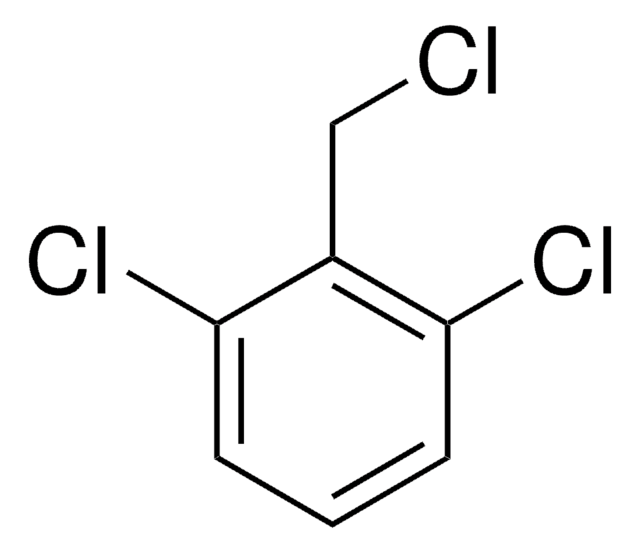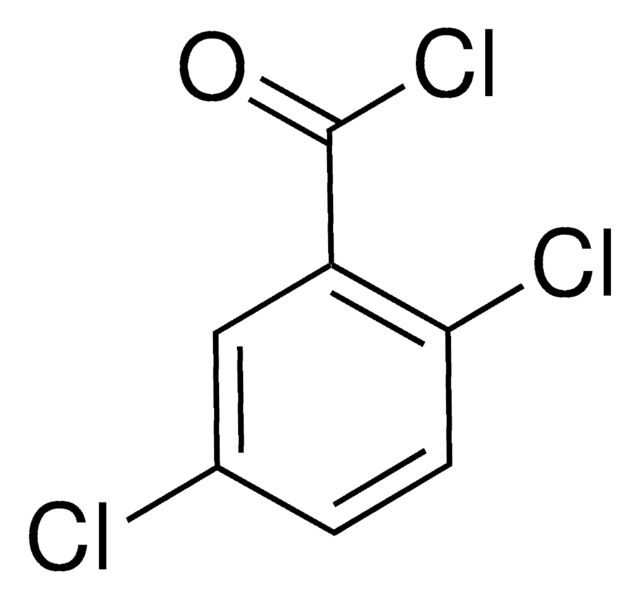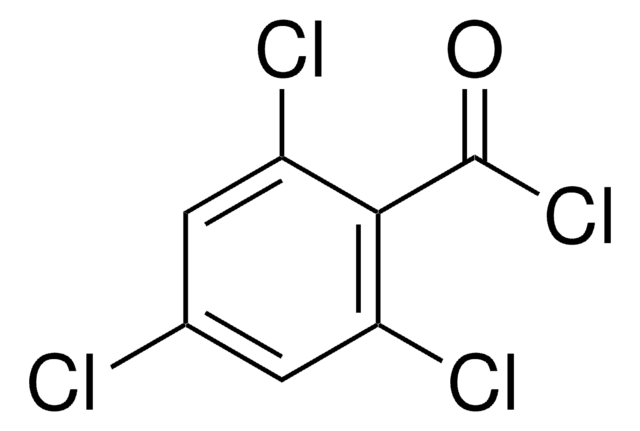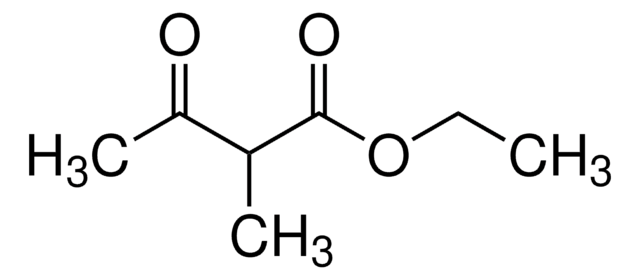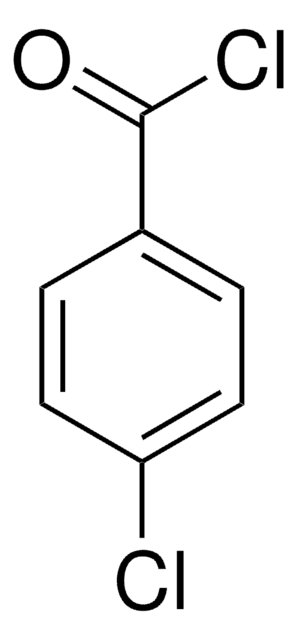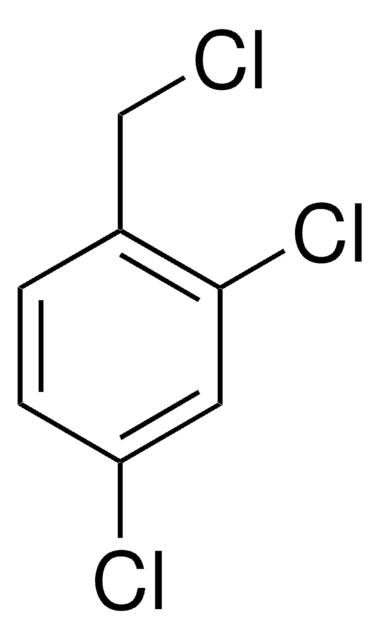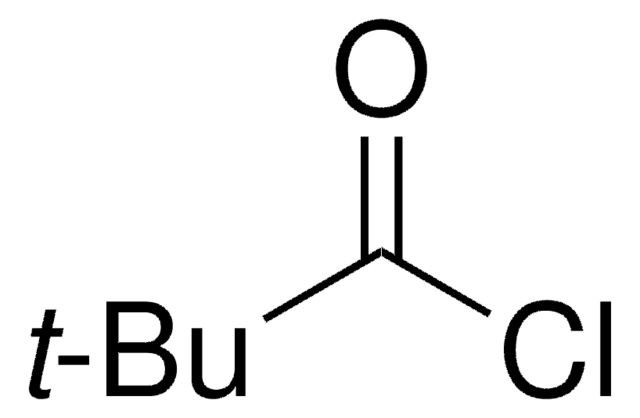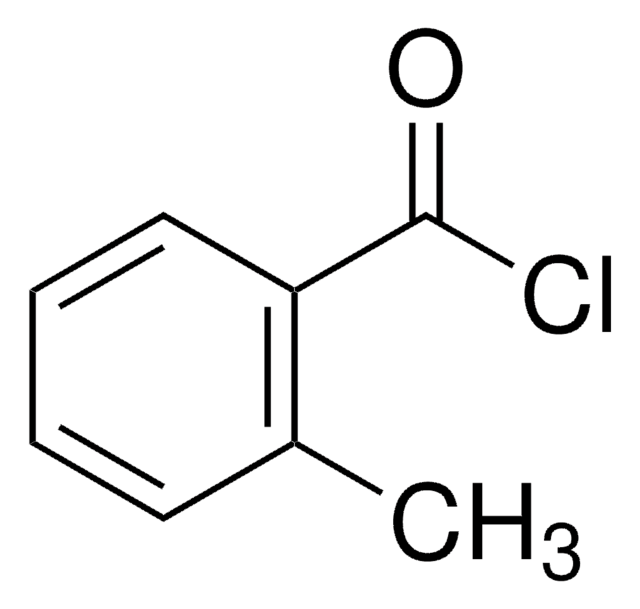推荐产品
品質等級
化驗
99%
形狀
liquid
折射率
n20/D 1.560 (lit.)
bp
142-143 °C/21 mmHg (lit.)
mp
15-17 °C
密度
1.462 g/mL at 25 °C (lit.)
官能基
acyl chloride
chloro
SMILES 字串
ClC(=O)c1c(Cl)cccc1Cl
InChI
1S/C7H3Cl3O/c8-4-2-1-3-5(9)6(4)7(10)11/h1-3H
InChI 密鑰
JBLIDPPHFGWTKU-UHFFFAOYSA-N
正在寻找类似产品? 访问 产品对比指南
一般說明
2,6-Dichlorobenzoyl chloride participates in esterification of (fluoren-9-ylmethoxy)carbonyl (Fmoc)-amino acids to 4-alkoxybenzyl alcohol polystyrene.
應用
2,6-Dichlorobenzoyl chloride was used:
- in substrate activity screening method for the rapid development of novel substrates and their conversion into non-peptidic inhibitors of Cys and Ser proteases
- in the synthesis of 1-acyliridoles
- in enantiocontrolled total synthesis of (-)-aspicilin
訊號詞
Danger
危險聲明
危險分類
Skin Corr. 1B
儲存類別代碼
8A - Combustible corrosive hazardous materials
水污染物質分類(WGK)
WGK 1
閃點(°F)
235.4 °F - closed cup
閃點(°C)
113 °C - closed cup
個人防護裝備
Faceshields, Gloves, Goggles, type ABEK (EN14387) respirator filter
Sensitisation to dichlorobenzoyl chloride.
J De Boer et al.
Contact dermatitis, 18(2), 116-117 (1988-02-01)
Morphine recognition by a porphyrin-cyclocholate molecular bowl.
Bonar-Law RP, et al.
Journal of the Chemical Society. Chemical Communications, 5, 456-458 (1993)
An improved method for anchoring of 9-fluorenylmethoxycarbonyl-amino acids to 4-alkoxybenzyl alcohol resins.
Sieber, P.
Tetrahedron Letters, 28(49), 6147-6150 (1987)
Stereocontrolled total synthesis of the macrocyclic lactone (-)-aspicilin.
Waanders PP, et al.
Tetrahedron Letters, 28(21), 2409-2412 (1987)
Andrew W Patterson et al.
Nature protocols, 2(2), 424-433 (2007-04-05)
Substrate activity screening (SAS) is a fragment-based method for the rapid development of novel substrates and their conversion into non-peptidic inhibitors of Cys and Ser proteases. The method consists of three steps: (i) a library of N-acyl aminocoumarins with diverse
我们的科学家团队拥有各种研究领域经验,包括生命科学、材料科学、化学合成、色谱、分析及许多其他领域.
联系客户支持